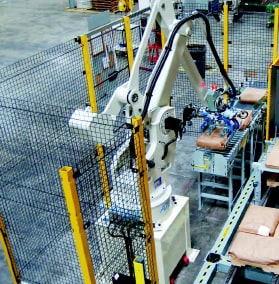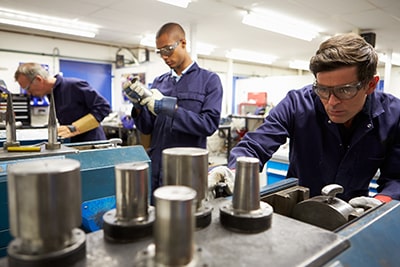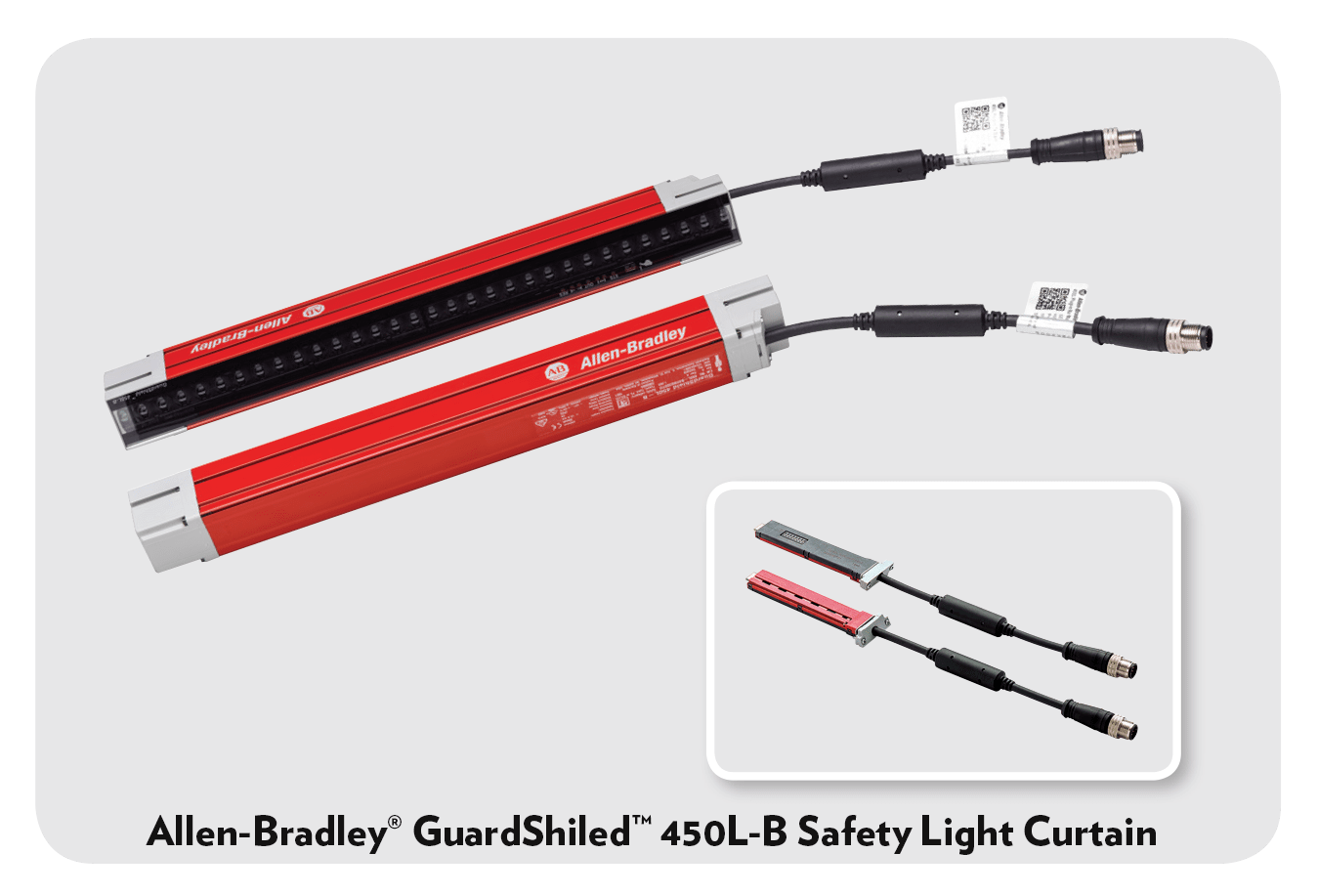In manufacturing facilities, machine guarding is critical to workplace safety. Exposure to inadequately guarded machines can result in crippling injuries. According to OSHA, 18,000 workers suffer lacerations, abrasions, crushing injuries, and amputations each year as a result of machinery. And there are over 800 deaths.
Taking the time to understand the risks and ensuring your machine safety program meets or exceeds machine guarding regulations can save lives.

The wonders of machinery have streamlined operations, increased productivity, and improved quality in manufacturing over the last century. Machines have also exposed workers to a variety of hazards as a result of their motions and actions. Mechanisms such as meshing gears, cutting teeth, and moving belts can cause severe injuries to human skin without missing a beat. Understanding the types of hazardous motions and actions happening in your facility is the first step to protecting workers from them.
Let’s look at the basic types of hazardous mechanical motions and actions.

- Rotating Motion can grip clothing and hair or force hands and arms into dangerous portions. Common rotating mechanisms include collars, couplings, cams, clutches, flywheels,
shaft ends, and spindles.
- In-Running Nip Point hazards are the result of rotating machine parts. There are three main types: rotation in opposite directions while axes are parallel, rotating and tangentially
moving parts, rotating and fixed parts creating a shearing, crushing, or abrading action.
- Reciprocating Motion can be dangerous because a worker can get stuck between moving and stationary parts.
- Transversing Motion is movement in a straight line. It can be hazardous because a person can be struck and caught in a shear or pinch point.
- Cutting Action hazards are present at the point of operation, and injuries to the fingers, arms, and body are possible. Additionally, chips or scrap material can strike the head and
face.
- Punching Action is a common mechanism for power presses and the hazard occurs when the stock is inserted, held, and withdrawn by hand.
- Shearing Action involves applying power to a blade to trim or shear materials. The hazard is present at the point of operation when the stock is inserted, held, and withdrawn.
- Bending Action is common in power presses, press brakes, and tubing benders. Much like the other actions, the hazard is at the point of operation where the stock is inserted, held,
and withdrawn.
All machines have three fundamental areas:
- Point of Operation – This is where the work takes place, where many of the motions and actions listed above occur, including boring, cutting, and shaping.
- Power Transmission Device – This powers the motions and actions machines perform. Components of the mechanical system such as belts, chains, gears, pulleys, and spindles
transmit energy.
- Operating Controls – These controls can be mechanical or electrical and allow an operator to cut off power remotely.
Despite these commonalities, machine guarding needs vary widely from one machine to the next because of the different physical characteristics and levels of operator involvement.
The list of machine-related injuries is as horrifying as it is long. That’s why OSHA has instituted general requirements to protect your workers from the loss of life and limb. Safeguarding machines is essential to workplace safety, helping you avoid preventable injuries and the related costs and downtime associated with accidents.

OSHA developed general requirements to ensure the safety of both machine operators and other employees in the area. [29 CFR 1910.212(a)(1)] These requirements include: [29 CFR 1910.212(a)(2)]
- Guards must not create potential hazards
- Guards must be attached to the machine where possible
- If guards cannot be attached to the machine, attach elsewhere
At a minimum, machine guarding should:
- Prevent Contact – An adequate guarding system prevents contact with or close proximity to hazardous moving parts.
- Secure – Guards should be durable and firmly affixed to prevent removal and tampering and mitigate wear and tear.
- Protect from Falling Objects – It should not be possible for objects to fall into moving parts, which can create dangerous projectiles.
- Create No New Hazards – Guards should not have sharp, jagged edges or unfinished surfaces that can cause injuries.
- Create No Interference – Guards should not prevent workers from performing tasks quickly and comfortably. Safeguards should enhance efficiency.
- Allow Safe Maintenance – Whenever possible, machines should be able to be maintained and serviced without removing safeguards.
Here is a breakdown of the types of machine guarding equipment designed to protect workers.

- Fixed
- Interlocked
- Adjustable
- Self-Adjusting
- Presence and Motion Sensing
- Pullback
- Restraint
- Safety Controls
- Gates
- Robots
- Feeding and Ejection Methods
- Hand Feeding Tools
Here are some basic standards to keep in mind:
- Belts, blades, and chains should have no more than a half-inch exposed.
- Grinders should have no more than an eighth of an inch between the wheel and the tool rest.
- Screen type guarding should have no opening greater than a half-inch.
- Rollers, pulleys, belts, chains, and gears must be guarded along with their entire access.
The golden rule for machinery: Any machine part, function, or process that can cause injury must be safeguarded. We can help you control and eliminate the hazards in your facility. Our Safety Specialists are well-versed in safety compliance standards and can help you prevent machine-related injuries. Contact us today!
